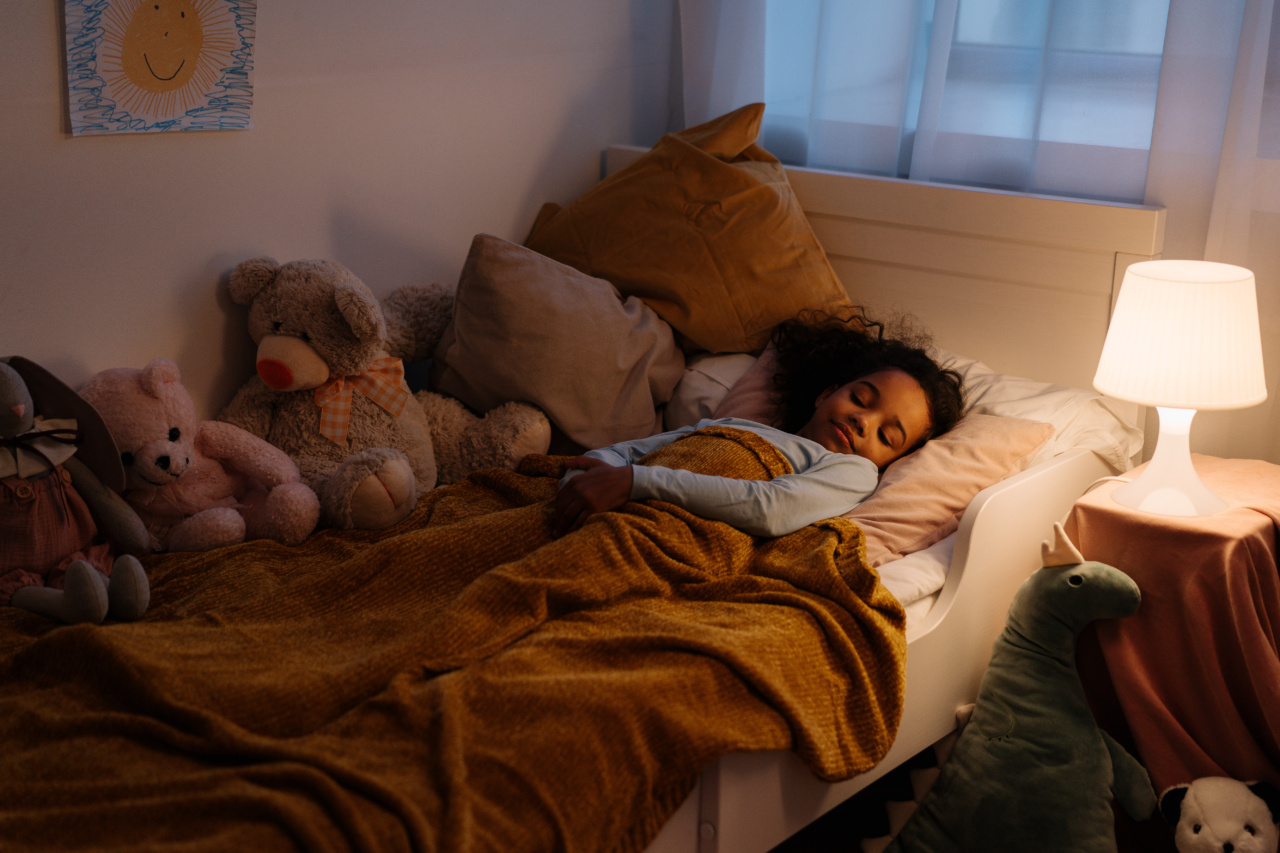As parents, we always strive to provide the best for our children, ensuring their health, safety, and overall well-being. One crucial aspect of a child’s health that often gets overlooked is their sleep.
Creating a comfortable sleep environment for children is essential in promoting good sleep habits, improving sleep quality, and ultimately contributing to their overall growth and development. In this article, we will explore the significance of a conducive sleep environment for children and provide tips on how to optimize it.
1. Quality Sleep and its Benefits
A good night’s sleep is crucial for children as it directly impacts their physical and mental well-being. Quality sleep is linked to improved attention span, memory consolidation, emotional regulation, and overall cognitive performance.
It also plays a vital role in supporting physical growth and development, strengthening the immune system, and maintaining a healthy body weight. Therefore, providing children with an environment that promotes restful and uninterrupted sleep is of utmost importance.
2. Create a Sleep Oasis
One of the first steps in ensuring a comfortable sleep environment for children is creating a sleep oasis in their bedroom.
The bedroom should be associated with relaxation and sleep, separate from areas where they engage in other activities such as playing or studying. This helps children establish a mental and physical association between their bedroom and sleep.
3. Optimal Temperature and Ventilation
The temperature of the bedroom significantly affects sleep quality. Studies suggest that a cool room temperature, between 60-67 degrees Fahrenheit (15-19 degrees Celsius), promotes a deeper and more restful sleep.
Ensure good ventilation to maintain fresh air circulation in the room, contributing to a comfortable sleep environment.
4. Consider Lighting
Eliminating excessive light is vital in promoting better sleep. Use blackout curtains or blinds to block out external light sources such as street lamps or sunlight.
Additionally, consider using nightlights with a dim and soothing glow to alleviate any fear of darkness that might disturb your child’s sleep.
5. Noise Control
Noise can be a significant disruptor of sleep, especially for children who are light sleepers. Minimize external noise sources by using earplugs, white noise machines, or calming background sounds such as nature soundscapes or gentle lullabies.
Establishing a quiet sleep environment will foster a more peaceful and restorative sleep experience.
6. Comfortable Bed and Bedding
A comfortable bed and appropriate bedding are essential components of a sleep-friendly environment for children. Ensure the mattress provides adequate support and comfort for your child’s growing body.
Soft and hypoallergenic bedding materials, including pillows and blankets, promote a cozy and safe sleep environment.
7. Limit Electronic Distractions
Electronics in the bedroom, such as TVs, tablets, or smartphones, can be detrimental to sleep quality. The blue light emitted by these devices suppresses the production of melatonin, a hormone essential for regulating sleep-wake cycles.
It is crucial to establish a rule of no electronic devices in the bedroom, especially near bedtime, to promote healthy sleep habits.
8. Establish a Consistent Bedtime Routine
A consistent bedtime routine helps signal to children that it is time to wind down and prepare for sleep. A predictable routine can include activities such as taking a warm bath, reading a book, or engaging in a calming activity.
This routine should be soothing and relaxing, allowing children to transition from a state of alertness to a more restful sleep mode.
9. Keep the Bedroom Clutter-Free
A clutter-free bedroom promotes a sense of calm and tranquility, aiding in better sleep. Remove toys, books, or any other objects that might cause visual and mental stimulation.
Creating a clean and organized bedroom environment enhances relaxation and reduces potential distractions.
10. Encourage Open Communication
Lastly, open communication about sleep between parents and children is essential. Encourage children to express their thoughts and feelings about their sleep environment.
Address any concerns they may have and involve them in the process of optimizing their sleep space. By including children in the decision-making, they feel empowered and have a greater sense of ownership over their sleep environment.
Conclusion
A comfortable sleep environment plays a vital role in promoting healthy sleep habits for children. Quality sleep supports their growth, development, and overall well-being.
By creating a sleep oasis, optimizing temperature and lighting, controlling noise, providing a comfortable bed and bedding, limiting electronic distractions, establishing a consistent bedtime routine, keeping the bedroom clutter-free, and encouraging open communication, parents can ensure their children experience restful and rejuvenating sleep. Prioritizing a comfortable sleep environment sets the foundation for a lifetime of healthy sleep and promotes optimal physical and cognitive development.






























